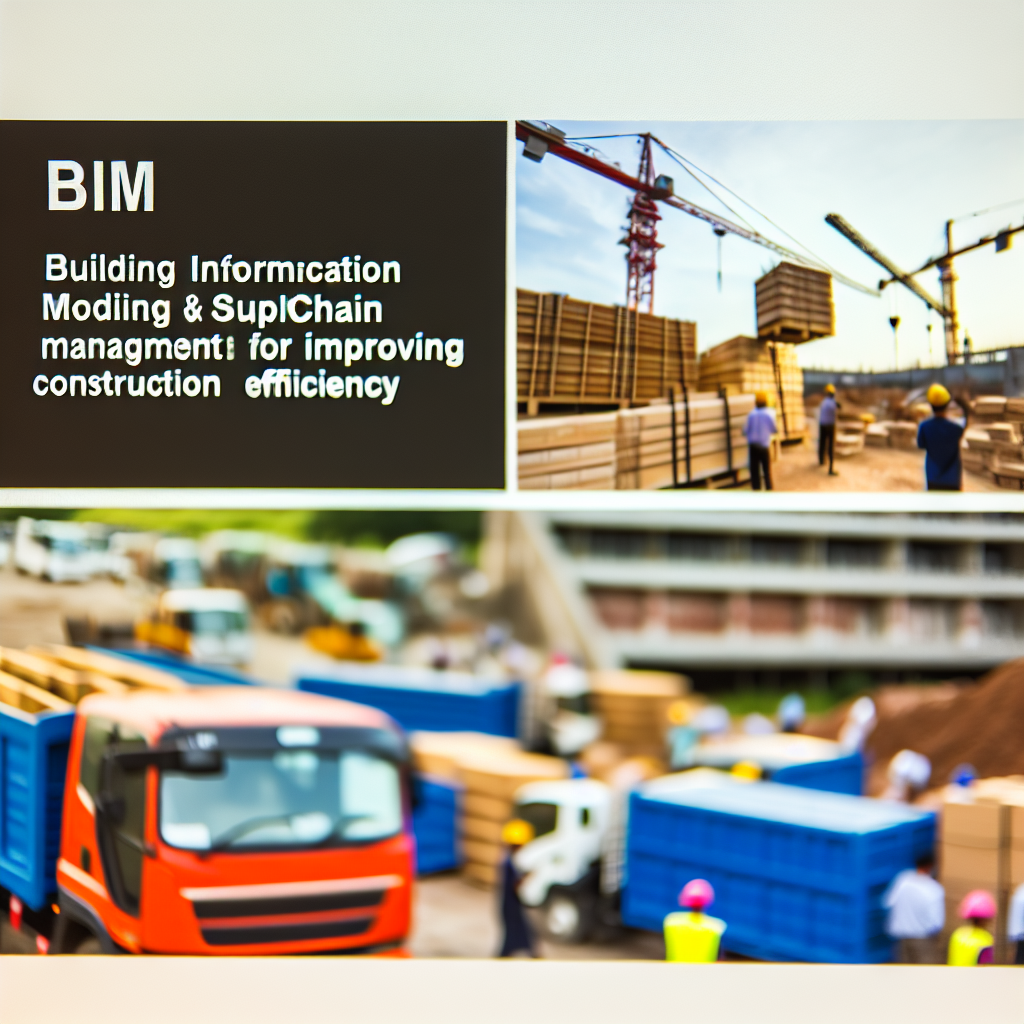Enhancing Supply Chain Efficiency through BIM and Information Management
Building Information Modeling (BIM) has revolutionized construction processes by enabling precise digital representations of physical assets. When integrated with supply chain information management, BIM facilitates streamlined communication, improved coordination, and greater transparency across project stakeholders. This article explores how BIM enhances supply chain management in construction, focusing on data integration and process optimization.
Leveraging BIM for Real-Time Data Exchange and Supply Chain Visibility
One of BIM’s most impactful contributions to supply chain management is its capability to facilitate **real-time data exchange**. By creating a shared, dynamic digital model, all stakeholders—from suppliers and manufacturers to contractors and architects—can access up-to-date information about material inventories, delivery schedules, and installation sequences. This transparency reduces delays and minimizes miscommunications that often cause project setbacks.
Furthermore, BIM’s integration with supply chain management systems enables **end-to-end visibility**. Through detailed models embedded with logistical data, project managers can track material flows, predict potential bottlenecks, and make proactive decisions. This level of transparency fosters collaborative planning, reduces excess inventory, and ensures that materials arrive precisely when needed, resulting in cost savings and improved project timelines.
- Enhanced coordination: Ensures seamless communication between suppliers and project teams.
- Reduced waste: Accurate data minimizes over-ordering and material surplus.
- Predictive analytics: Data-driven insights improve forecasting accuracy and risk management.
Integrating BIM with Supply Chain Technologies for Optimal Project Outcomes
Combining BIM with advanced supply chain technologies like Enterprise Resource Planning (ERP) systems, Radio Frequency Identification (RFID), and Internet of Things (IoT) devices creates a **holistic management ecosystem**. This integration facilitates automated procurement processes, tracking of materials in real-time, and predictive maintenance scheduling.
For example, RFID tags on delivery trucks can update BIM models with accurate arrival times, while IoT sensors embedded in materials can monitor environmental conditions during storage and transportation. These data points contribute to **more reliable scheduling, reduced delays, and optimized resource allocation**. Additionally, smart dashboards visualizing integrated data enable project managers to make informed decisions quickly, increasing overall efficiency.
- Automation: Reduces manual data entry and labor costs.
- Data accuracy: Minimizes errors in inventory and logistics information.
- Predictive maintenance: Prevention of equipment failures and delays.
Conclusion
In summary, the integration of BIM with supply chain information management significantly enhances construction project efficiency by enabling real-time data exchange, transparency, and technological synergy. These advancements lead to cost savings, reduced waste, and improved project outcomes. Embracing these integrated approaches is essential for modern construction organizations aiming for competitive advantage and sustainable operations.
